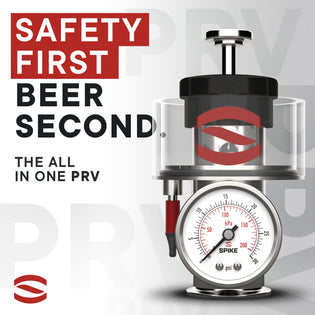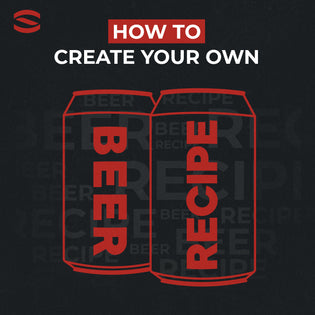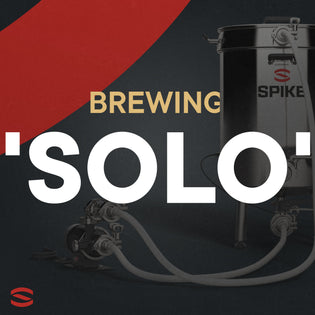By Greg Wegiel
My name is Greg Wegiel, and I have been a homebrewer since 2011. During this time I have learned a lot about the brewing process and came to the conclusion that a key component of this process is the drive to improve each time I brew.
To date, I have over 170 batches under my belt starting from a boil kettle on the stove and working on up. In 2018, I made the switch from a BrewInABag system in the garage to a complete electric 20G Spike Trio System. Since then I have added in two CF15 with a glycol chiller to complete the package. In 2022 I joined the Master Homebrewer Program and brought home 30 medals for the year. Brewing is a passion to me and I aim to improve my process each time I brew and am always willing to help out anyone who may need it. So let’s get into it!
Bottling is one of the most common ways for a homebrewer to package their creations. Many ask, what are the proper tools needed, and what is the proper process to bottle beer? Not following the proper process or procedure can lead to poor tasting or infected beer. In this blog, we will be discussing the key points behind bottling your beer. The main keys to success are as follows:
- When the proper time to bottle your brew
- Key items needed for bottling
- Step By Step bottling sequence including key points
- When to drink bottled beer
How Do I Know When My Beer is Ready For Bottling?
You know when your beer is ready for bottling after the fermentation cycle has completed (no activity in the airlock and verified by taking a gravity reading) and you have completed any personal pre-bottling rituals that you may have. These include secondary fermentations, clarifying, etc.
With general bottling these will not be necessary as the goal is to keep some yeast in suspension to activate with the priming sugars to recreate fermentation and carbonate the beer.
Can You Bottle Beer Before Fermentation is Complete?
No, bottling before fermentation completes is a risky procedure. The beer will continue to ferment in the bottle uncontrollably. This can increase pressure inside of the bottle, possibly to a level that the bottle cannot hold causing the bottle to explode. We will discuss bottle conditioning later, which is a form of this, but in a controlled manner.
Can You Bottle Straight From the Fermenter?
Yes! There are multiple ways to bottle from the fermenter depending on the complexity of your setup.
- Standard Carboy: Best to transfer to a bottling bucket for addition of priming sugars to the beer.
- Stainless Steel: Can be bottled straight from the fermenter already carbonated and ready to enjoy.

Bottling Beer Supplies
At the very minimum, you’ll need: bottling bucket, bottling wand, sanitizer, bottles, caps and a capping tool. You can also add a counter pressure bottling wand as well.
How to Select Your Bottles
No matter where I get bottles, or what the status of the bottles are, the prep for them is all the same.
First, all bottles get a good rinse at the sink, any labels removed and loaded into a dishwasher capable of sanitizing and run them through a cycle. After this cycle is complete, they are ready for bottling. During bottling they are run through a quick rinse with Star San solution to further sanitize them and prevent any possible contamination.
Reuse Commercial Bottles
Most homebrewers gather bottles from other brewers by sharing or reusing commercial bottles.
Purchase New Bottles
If your brew buddies are also out of bottles, you may need to purchase some at a local home-brew shop.

How To Bottle Beer: Step-By-Step Guide
There are eight steps to bottling beer. Below we’ll go into more detail on each step, so you can get to bottling your delicious brews in no time!
Sanitation is Key
Everything that the beer is to come into contact with should be washed and sanitized properly. Personally I make a 5-gallon bucket of sanitizer solution that every piece of tubing, filters, wands, etc. sit in until they are needed. That’s just working smarter—not harder.
Priming
There are multiple ways to prime your beer for bottling from tablets to using table sugar, dextrose, DME, and more. The most common types are tablets and dextrose otherwise known as corn sugar.
The rule of thumb for dextrose would be ¾ cup for a 5-gallon batch. In order to put the sugar into the beer, you would need to boil the ¾ cup of dextrose in about 1-2 cups of water to sanitize it, and then pour it into your beer and stir it in gently (to decrease any chance of oxidation) with a sanitized stirring utensil.
Check the Alcohol Content
Be sure to take a hydrometer reading prior to bottling to properly measure your alcohol content of the beer. Alcohol content can be calculated by taking (OG-FG)/131.25. Bottle conditioning can actually increase this number by up to 0.2%

Siphoning
Siphoning should be handled by either using an auto-siphon tool or utilizing a sanitized hose and leaving some sanitizer in the hose to auto-start a transfer as listed below. Fill the hose with water (or preferably sanitizer) and then drain it into a separate container.
The liquid will pull the beer behind it, at which point you can plug the hose and move it to your bottling bucket or fermentor. By no means should sucking on the end of the hose be a technique to initiate a transfer as it is not sanitary!
Sanitize Your Caps
This is a simple step, but an easily forgettable one. This can be accomplished by keeping your caps in a solution of sanitizer and removing each one prior to capping. I use a FastRack bottle sanitizer that has a reservoir on it for just this purpose.
Filling
No matter the means of filling, the goal is the same. The bottle should be filled to around 1” from the top using your bottling wand, bottling gun, or counter pressure filler. Once filled to this level, the bottle should be immediately capped with a sanitized cap using the bottle capper.
When filling a carbonated beverage, capping should be done on top of foam. The foam is CO2 coming out of suspension and takes up the extra space in the bottle keeping oxygen out reducing any oxidation.
Capping
As covered in the filling section, bottles should be capped immediately after filling to decrease any chance of oxidation using a sanitized bottle cap and bottle capper.
Labeling
Bottle labeling is an optional part of the process and usually unnecessary if sending any beer to competitions. A majority of homebrewers these days either put masking tape on the bottle with information or simply use a marker on the bottle cap to identify the contents.
However, this doesn’t mean that you can’t have some fun by creating your own unique label for some of your favorite beers. It’s also a good idea to label beer if you’d like to give it as a gift to share with fellow brewers.

How Long Should Beer Sit After Bottling?
How long the beer sits after bottling depends on the style of beer and how it was bottled. If it was a style of beer that you plan on aging, (stouts, barleywines, etc.) it is best to let it condition in the bottle for some time, and crack one open and check on them periodically. If you bottled straight from a fermenter that was carbonated prior to bottling, the beer will be ready to drink immediately.
If you bottle conditioned the beer, then it’s best to wait 1-2 weeks prior to putting the beer in the fridge and getting it ready to drink. This lets the priming sugar re-ferment in the bottle creating the carbonation.
Final Thoughts
Discussed in this article are all of the different parts and pieces that are key to bottling beer. Some of them are a necessity and some are just optional and make the process easier. Just keep in mind that the key parts are keeping everything clean and sanitized and keeping oxygen out in order to keep what you created fresh and drinkable until it's gone. Which depending on how good the beer is…could be right away.

It’s been over a decade since Greg Wegiel upgraded from the stove to a 3-vessel electric brewing system, and he hasn’t looked back since. With over 170 batches under his belt and 30 medals to show for it, he is constantly looking for ways to experiment, improve and create delicious tasting brews.





